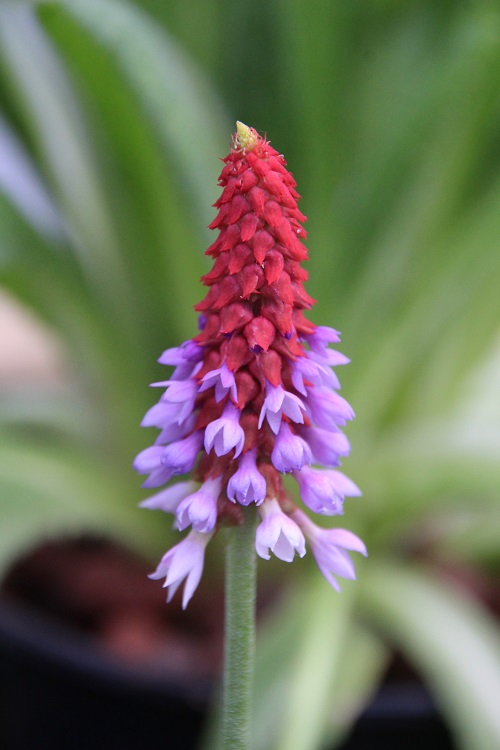 |
Primula vialii is a very wonderful species that would look magnificent massed in a bed. I like growing plants in masses in the garden, it seemed like a perfect
opportunity. Unfortunately there is a snag. Although easily grown from seed it can be short lived, especially if confitions are not quite right.
It will settle for a good, moist loam but it would prefer a sloping soil with water draining through it. It doesn't really like bog conditions,
which are too stagnant for it. As a consequence, large displays require constant re-propagation from seed and re-planting. It's a beautiful plant, but I can't be bothered. I gave this one a try on the offchance that it might be happy by a strange quirk of fate. It wasn't. Initially found in Yunnan and south-west Sichuan, John Richards says: "Seems never to have been rediscovered in the 'modern era' although it occurred in areas which are now intensively botanised. Most sites may now be intensively cultivated, and P. vialii, like P. flaccida may have become rare and threatened. Every effort should be made to relocate and conserve these fine species in the wild." Writing in the Journal of the Alpine Garden Society, G. S. Evans says: "A primula discovered in 1888 by Abbe Delavay in Yunnan, was named by him P. viali. His colleague, Pere Vial, brought a collection of Delavay's herbarium specimens, including P. viali with an incomplete description, back to Europe, where Adrien Franchet included this plant in a publication on the genus in 1891. In a later monograph Pax had to rely not only on Franchet's confusing publication but also on some material collected by A. E. Pratt in 1889, which itself was not very helpful. When George Forrest rediscovered this remarkably fine primula in 1913 he had, therefore, no adequate published description to enable him to identify it with Delavay's Primila viali. He therefore presumed it to be a new species and named it after his companion explorer, Consul Litton, as Primula littoniana. It was some years before the confusion was resolved and the prior name of P. viali was restored. (It is now correctly P. vialii ED.)" |
|
| 12th June 2016 | ||